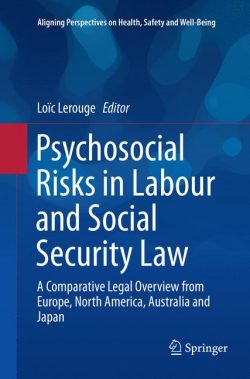Ideology is so powerful it makes us believe that war is rational, despite both its brutal means and its devastating ends. The power of ideology comes from its intimate relation to language: ideology recruits all semiotic modalities, but language is its engine-room. Drawing on Halliday’s linguistic theory – in particular, his account of the “semiotic big-bang” – this book explains the latent semiotic machinery of language on which ideology depends. The book illustrates the ideological power of language through a study of perhaps the most significant and consequential of our ideologies: those that enable us to legitimate, celebrate, even venerate war, at the same time that we abhor, denounce and proscribe violence. To do so, it makes use of large multi-register corpora (including the British National Corpus), and the reporting of the 2003 invasion of Iraq by Australian, US, European, and Asian news sources. Combining detailed text analysis with corpus linguistic methods, it provides an empirical analysis showing the astonishing reach of our ideologies of war and their profoundly covert and coercive power.
Table of Contents
1. Language, Linguistics and Ideology
1.1. Introduction: Ideology, War, and Violence
1.2. A Sociological Account of War and Violence
1.3. The Problem of Language in Sociology/Critical Theory
1.4. The Problem of Ideology in Linguistics
1.5. Three Models of the Relationship between Language and Ideology
1.5.1. Model 1: Ideology and Language as Distinct Phenomena
1.5.2. Model 2: Partial Overlap between Language and Ideology
1.5.3. Model 3: Language and Ideology Inextricably Intertwined
1.6. The Case Study: Data and Method
1.7. A Linguistic Approach to the Problem of Ideology
1.8. References
2. The Quest for Meaning in 20th Century Linguistics
2.1. Introduction: Out of the Buzz and Hum …
2.2. Valentin N. Vološinov (1895-1936)
2.3. Ferdinand de Saussure (1857-1913)
2.4. Bronislaw Malinowski (1884-1942)
2.5. John Rupert Firth (1890-1960)
2.6. Benjamin Lee Whorf (1897-1941)
2.7. Basil Bernstein (1924-2000)
2.8. Conclusion
2.9. References
3. Ideology in a Socio-Semiotic Linguistic Theory
3.1. Introduction
3.2. Language: Matter and Meaning Intertwined
3.3. Ideology in the Architecture of Human Language
3.4. Ideology in Langue and in Parole
3.5. Ideology in the Act of Meaning: Register and Semantic Variation
3.6. Conclusion
3.7. References
4. War and Violence: Etymology, Definitions, Frequencies, Collocations
4.1. Introduction
4.2. War in the Dictionary and Thesaurus
4.3. Violence in the Dictionary and Thesaurus
4.4. War and Violence: Word Frequencies and Dispersion
4.5. War and Violence: Collocational Patterns
4.6. Conclusion
4.7. References
5. Ideology in the Act of Meaning
5.1. Introduction: Text-in-Context
5.2. Tenor, Field and Mode in ABC Text
5.3. The Textual Function
5.3.1. Patterns in Theme
5.3.2. The System of DETERMINATION
5.3.3. Cohesion
5.3.4. The system of INFORMATION
5.4. The Ideational Function
5.5. The Interpersonal Function
5.6. Conclusion
5.7. References
6. A Counter-ideology: War as Violence
6.1. Introduction: When War is Violence
6.2. The Textual Function
6.2.1. Patterns in Theme
6.2.2. Cohesion
6.3. The Ideational Function
6.4. The Interpersonal Function
6.5. Conclusion
6.6. References
7. Configurative Rapport: The “Existential Fabric” of War
7.1. Introduction: Never the Twain shall Meet
7.2. The Dissociation of War from Violence
7.3. ABC v Robert Fisk: Keyword Analysis
7.4. The Grammatical Characteristics of War
7.5. How are Perpetrators of the Violence Construed?
7.6. Processes of War: Assault, Strike, Invade, Attack, Bomb and Kill
7.7. Conclusion
7.8. References
8. Language in the Legitimation of War
8.1. References
9. Appendices
9.1. Appendix 1: Collocations of War and Violence in British National Corpus
9.2. Appendix 2: ABC Text (T1)
9.2.1. The Textual Function
9.2.2. The Ideational Function
9.2.3. The Interpersonal Function
9.3. Appendix 3: News article by Robert Fisk (T2)
9.3.1. The Textual Function
9.3.2. The Ideational Function
9.3.3. The Interpersonal Function
9.4. Appendix 4: Additional tables for Chapter 7
10. Index
Annabelle Lukin is Associate Professor of Linguistics at Macquarie University. She teaches grammar and meaning, as well as general linguistic theory. She has lectured in China and Latin America, and is a regular commentator on language matters in the Australian media. Ideology is so powerful it makes us believe that war is rational, despite both its brutal means and its devastating ends. The power of ideology comes from its intimate relation to language: ideology recruits all semiotic modalities, but language is its engine-room. Drawing on Halliday’s linguistic theory – in particular, his account of the “semiotic big-bang” – this book explains the latent semiotic machinery of language on which ideology depends. The book illustrates the ideological power of language through a study of perhaps the most significant and consequential of our ideologies: those that enable us to legitimate, celebrate, even venerate war, at the same time that we abhor, denounce and proscribe violence. To do so, it makes use of large multi-register corpora (including the British National Corpus), and the reporting of the 2003 invasion of Iraq by Australian, US, European, and Asian news sources. Combining detailed text analysis with corpus linguistic methods, it provides an empirical analysis showing the astonishing reach of our ideologies of war and their profoundly covert and coercive power.
First fully Hallidayan account of the relations of language and ideology
Unique in its combination of theory and empirical demonstration of a specific ideology
Synthesises a sociological account of war with a social-semiotic theory of ideology
Combines corpus linguistic methods with detailed text analysis
Draws on both multi-register and register-specific corpora



